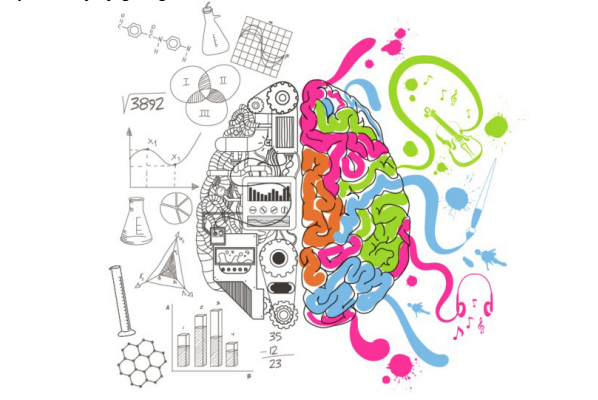
American psychologist and author Carol Dweck is a world-renowned name for her work on developmental psychology, motivation, and success. Let’s briefly recall the two concepts named “Growth Mindset” and “Fixed Mindset” that Dweck defined after long research. People with a fixed mindset do not believe that talents can be developed later. They’re either, “I’m terrible at this.” or “There is no one better than me at this job.” They are afraid of failure and mistakes. Growth-minded people, on the other hand, know that intelligence and abilities can be developed with perseverance, love of learning, focus, practice, and effort.
In her talk on the TEDx platform, Dweck provides evidence that highlights the differences between a growth mindset and a fixed mindset: “In a high school in Chicago, I heard that students had to pass a certain number of courses to graduate and that they were graded ‘Not yet’ for the course they failed. I thought this was great. Because if you fail, you think you are a hopeless case. But if you get the ‘Not yet’ grade, you know you’re on the learning curve. This gives you a ‘way into the future’. I wanted to see how children cope with difficulties and problems. For this, I gave 10-year-olds questions that were difficult for them to solve. Some responded surprisingly positively. They said things like: ‘I like the challenge!’ or ‘I hope this is instructive.’ They were aware that their talents could be developed. They had what I call a growth mindset. But the other students felt that it was a disaster. According to them, their intelligence had been put to the test and they had failed. Instead of savoring the power of ‘yet’, they clung to the tyranny of the present. What did they do then? In one study, they said that if they failed the test, they would likely cheat instead of studying harder next time. In another study, they looked for someone who did worse than they did after a failure so they would feel better when they found that person. They avoided difficulty throughout their studies. The scientists observed the electrical activity in the brains of students when they encountered an error. Students with a fixed mindset have almost no activity in their minds. They are avoiding error. They don’t bond with him. But students who have a growth mindset and the idea that their abilities can be developed form very deep bonds with error.”
We parents and educators want our children to be happy and successful. We approach them with love and strive to teach them about life. But sometimes we make mistakes too. For example, when we praise or criticize our children, we unconsciously trigger a fixed mindset in them. Carol Dweck, in her book “Use Your Mind the Right Way,” states: “A good teacher is one who keeps learning with his students.” It’s okay, we can make mistakes. But, just as Dweck stated, we can correct our mistakes by continuing to learn. The developmental mindset can be developed at any age, but early childhood, when most of the brain and personality development is completed, is the ideal and most critical year for this mindset to become established. With a growth mindset, our children can discover their own superpowers and reach their true potential.
The following strategies can guide us in instilling a growth mindset in our children.
Teach how the brain works

As our kids learn how to do something and get plenty of practice at it, they should know that their brains are literally developing new connections. Learning about the activity going on in their brains as they practice gets kids excited about the learning process. We can find different ways to explain this fact to children in age-appropriate language. We can benefit from educational videos and illustrated stories for our young children. With our child, “You are building this tower faster and stronger each time. Are you aware? How do you think this happens?” We can start a conversation with an approach like telling him how our brain develops as we exercise. When children learn how their brains work, they take the first step towards gaining a growth mindset.
Educate about good and bad thoughts
We can seize every opportunity to understand our children’s thoughts. If he has a negative attitude towards a particular activity, we can teach him to challenge. We can put into words good thoughts that will encourage us to struggle with difficulties and strengthen our brain, as well as bad thoughts that will make us accept failure. For example, we can express our good thoughts about cycling with such optimistic sentences: “If I keep practicing, I will learn”, “It’s okay to make mistakes”, “I’m still learning.”… If you think pessimistically, and say “This is too hard, I can’t” we are saying that we will have given up without giving ourselves enough chances. After giving our child example sentences about good thoughts, say, “Now it’s your turn… Your brain will need good thoughts to learn to ride a bike. Can you add some good thoughts too?” we can encourage our child to understand the difference between good and bad thoughts.
Model the growth mindset
No matter what you say to children, they learn most about life by imitating their parents and other adults around them-teachers, caregivers, family elders. The best way to teach our children about the growth mindset is to demonstrate exemplary behavior that will enable them to adopt it. By letting our children hear our thoughts aloud when we encounter difficulties, we can model a growth mindset for them. For example, instead of saying “I couldn’t do this again and never will. I am a bad cook.” try saying “This is really hard for me right now. I think I’d better keep practicing.” or instead of “I could never do that.” you can say “I haven’t learned how to do this yet.”
Show your struggles
It’s a natural tendency to try to hide our mistakes from our children – because we want to protect them – but trying to cover up our mistakes all the time prevents us from modeling a growth mindset. Showing our struggles is like a gift for our children that will have a lifelong positive impact. We can try talking to our children about our personal mistakes, even parenting mistakes, what we’ve learned from those mistakes, and how we’ve struggled to succeed. Someone with a growth mindset sees failure as a springboard for growth. When children hear that we also have failures and that we use them as a springboard to improve ourselves, they think that we should try without giving up and they want to do the same.
Celebrate effort, not result
We need to teach children that their brains are like a muscle that can be strengthened with hard work. One of the most effective ways to teach this is to praise their efforts rather than their results. For example, instead of saying “Well done, you are very smart.” you can say, “You worked hard to build this castle, and here you go. Congratulations!” When we praise effort rather than the result of innate intelligence, we can help our children understand that success depends on effort. An effort is a tool under their control. Only by making an effort can they develop their intelligence and achieve their goals.
It takes time to get used to it… Add the magic word: Yet!

“Mom, I can’t play this game… I can’t…”
“I can’t ride the bike…”
We can teach our toddlers who use negative sentences like “I can’t tie my shoelaces” to add a magic word to those sentences: “Not yet!”
“I can’t ride the bike yet, but I’m learning.”
“I can’t tie my shoelaces very well yet. I work every day.”
Learning something, getting used to doing something new takes time and takes a lot of practice. The word “yet” indicates that even if we are not good at a job today, we believe that we can improve as we make efforts and that we are progressing in the learning process. The world is HUGE for children, and problems that seem trivial to us – not being able to ride a bike, not being able to solve a puzzle, not understanding a game… – can wreak havoc in young minds. As parents and educators, we can teach our children the power of time and patience. “Yeah, you can’t yet. You’ll get a little better each time you try. Don’t you forget that, ok?” We can help them overcome their fears and anxieties like this.
Teach goal setting
We can help our children set goals for themselves. We can guide them to achieve their goals. Carol Dweck lists the steps of setting a goal with the initials of the word “Smart” as follows:
S-Specific: Let’s ask our child exactly what his or her purpose is.
M-Measurable: How will they define success?
A-Attainable: Is the goal realistic? If our child is planning to build a ship to go into space, we may want to intervene ☺
R-Relevant: Does the target have useful, meaningful features?
T-Time Bound: What is the time limit?
By using these steps, we have the opportunity to teach our children how to set realistic goals, how to measure success and time management.
Encourage positive self-talk
We can talk to our children about both positive and negative “inner voices” and the concept of self-talk. We can teach them to recognize useless self-talk and replace it with positive alternatives. Within the framework of the “Development Mentality,” we can encourage positive self-talk or express ourselves out loud with positive sentences.
| Fixed Mindset | Growth Mentality |
| I’m not good at this… | What am I missing? |
| This is very difficult… | It will take me some time to learn this. |
| I am very bad at chess… | I will train my brain for chess. |
| I suck at football… | I’m not as good at football as I would like yet. |
| I’m great at this… | I learned how to do it. |
Do not label your child
When we label our children with positive or negative adjectives such as “You are very smart, my child”, “You are very beautiful”, “You are the smartest child among your friends”, “You are naughty!”, “Why are you so rude?”… we set limits for them. Yes, they may be naturally intelligent and talented, but their effort for success is just as important. A child who regularly hears about how smart he is, starts to blame himself when he doesn’t succeed, tending to think that he is either not really smart or that he is incompetent even though he is smart. A child who often hears that she is very beautiful may be disappointed with her changing appearance as she grows up, or she convinces herself that sheer beauty is a measure of success. Labels, whether good or bad, can hinder the development of a child’s mind. Negative statements can deter the child from learning and trying harder. For example, if we frequently point out that he is not good at football, we may cause our child to give up on a hobby they love. Or “You are so naughty.” If we tag him by saying that, we give the message of “You will always be a naughty person. I do not expect any improvement from you”.
Instilling a growth mindset in our children is not complicated at all. By reviewing our words and behavior patterns, we can give our children a developmental mindset starting from their infancy. We can find creative and unique ways to achieve this without being limited to the few suggestions above.
